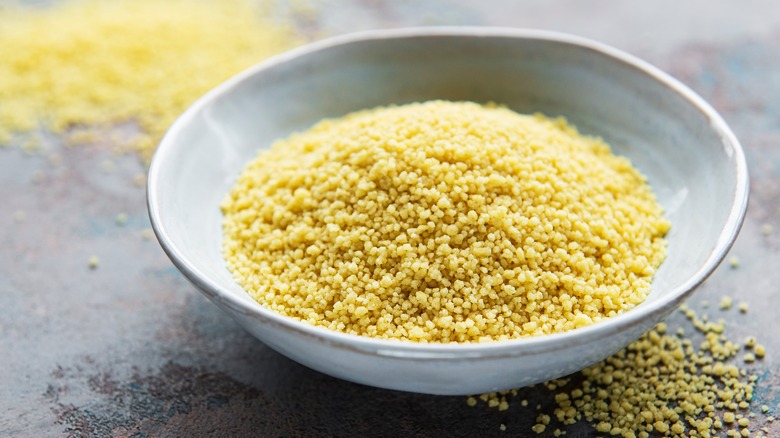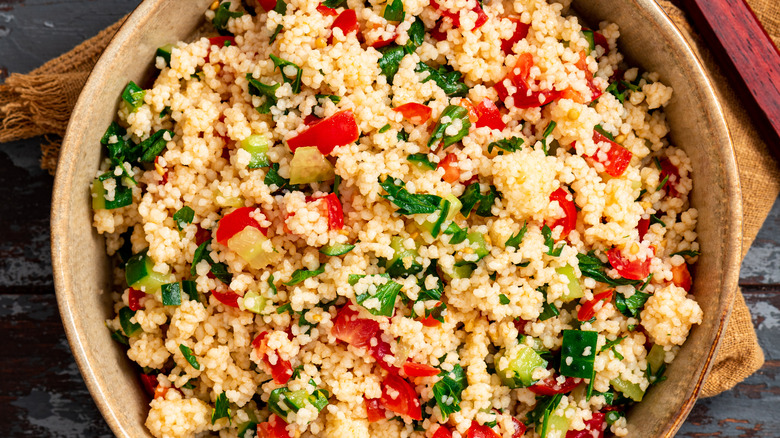The Biggest Mistake You're Making When Buying Couscous
Couscous is often mistaken for a grain, like rice, but is actually a form of pasta — it's composed of tiny balls of durum wheat semolina flour. It is a popular choice as a side dish, and its distinctive taste adds a unique flavor to soups, stews, and veggie dishes. It can be easy and quick to make (and therefore a good option for busy families), but you should know that there are different types of couscous with varying methods of preparation. Be aware that couscous can become waterlogged or taste too bland if you select the wrong variety for the recipe you're cooking.
There are three main types of couscous that can be distinguished from each other by their size: Moroccan couscous, the most popular one in the U.S. is the smallest type; Israeli "pearl" couscous is a larger form; and Lebanese is even larger, similar to the size of a pea. Distinguishing between these is important because they each have a different water-to-couscous ratio as well as a different method of cooking. The biggest mistake people make when buying couscous is simply buying the incorrect type, which sets them up for failure in the kitchen.
Know your couscous
The ratio for Moroccan couscous is 1:1 liquid to pasta, whether using water or broth. Too much liquid makes it sticky, and too little makes it dry. Boil the water, mix in couscous, cover and remove from heat. Leave it undisturbed for 8-10 minutes until all liquid is absorbed. The Israeli variety requires more liquid — 1 1/2 cups per 1 cup couscous. Simmer together covered for 10 minutes until the couscous begins to puff up. Don't overcook as al dente is preferable, but because Israeli couscous is blander and starchier than Moroccan, add spices or olive oil once done for more flavor. Lebanese couscous, which calls for around a 3-to-1 water-to-pasta ratio, requires a longer cooking time because it is the largest of the three. After bringing water to a boil and adding the couscous, cook for about 15 minutes, stirring occasionally.
Once the couscous is cooked, fluff, don't stir. You want to maintain the texture so that you taste each grain separately. Don't mash it or worse, leave it in clumps. With all types of couscous, don't overdo adding sauces or spices which could drown out the naturally nutty taste of the couscous itself. And, if you've made Moroccan couscous, try eating it from a shared bowl with your hands as is done in Morocco — but remember to only lick your fingers after the meal is over.

